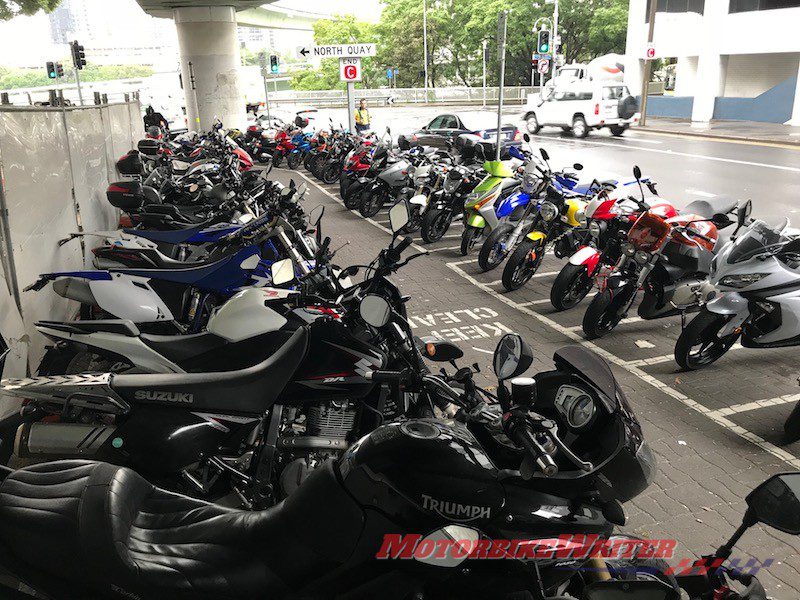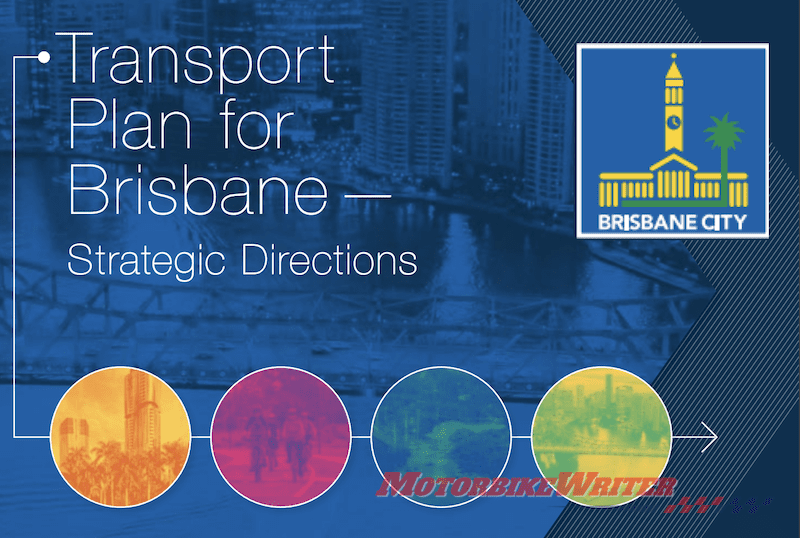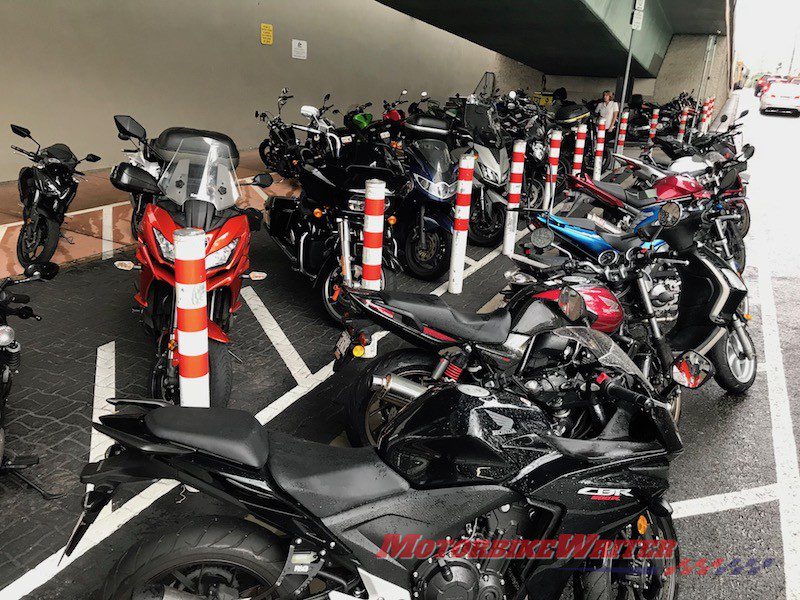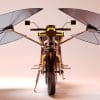Motorcycles rate just five “motherhood statements” in a 115-page Brisbane Transport Plan that pays lip service to riders and sought no input from any motorcycle group representatives.
Despite the statements that acknowledge motorcycling benefits, the plan includes no strategy to encourage motorcycling.
Meanwhile, whole sections are devoted to cycling and how it can improve traffic, pollution and parking problems.
It should be noted that the 14 members of the Lord Mayor’s External Reference Group included two Bicycle Queensland representatives (one was replaced by a newcomer).
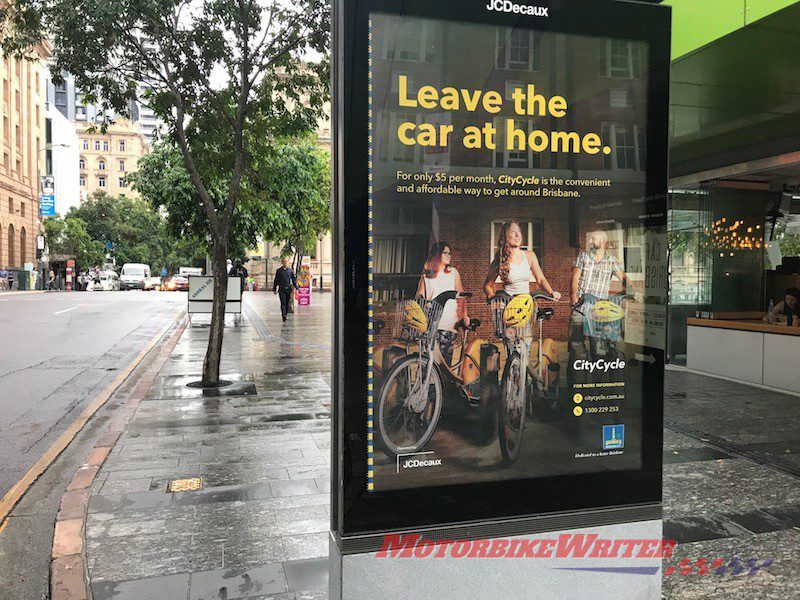
Not one person from the Motorcycle Riders Association of Queensland or any other motorcycle representative was invited to the group.
The scant regard for motorcycling is in contrast to Melbourne which has specific motorcycle objectives in its transport plan.
MRAQ President Chris Mearns says they made a submission about the benefits of motorcycles in reducing traffic congestion in the CBD.
“It is disappointing to have the benefits of greater motorcycle and scooter use acknowledged but then ignored,” he says.
Lip service
The Brisbane motherhood statements that pay lip service to motorcycles come under three different sections.
Clean and sustainable city:
“Encouraging the uptake of sustainable transport options, including walking, cycling, public transport and motorcycles can significantly reduce the impacts of transport on our environment.”
(There is no mention of what incentives or encouragement would be provided for motorcyclists.)
Convenient commuting:
“Motorcycles and mopeds can provide an alternative commute to low-occupant car transport. By lane filtering, motorcyclists can move through stationary and slow-moving traffic, allowing them to negotiate congested urban roads more effectively than cars. Council’s inner-city motorcycle parking scheme has provided more than 1600 spaces to assist accessibility.”
(Motorcycle commuters say this is not near enough and all spaces are filled by 7am each weekday.)
Transport direction:
“Provide for the use of two-wheeled commuter modes including motorcycles and mopeds.” (There is no mention of how this would be provided.)
Mobility within the inner city:
“Motorcycles and mopeds can also provide low-impact alternatives to car-based trips.”
“Provide for enhanced access for motorcycles and mopeds to the CBD and inner city destinations.” (There is also no mention of how this access would be achieved.)
The plan does include motorcycles in the “powered personal transport” category along with cars.
However, Chris says the plan is “not interested in doing anything” with this category.
“This is abundantly clear by the items that the plan has focused on, none of which are powered personal transport,” he says.
Consultation



Lip service to motorcycling comes despite 48 public submissions during the consultation period from November 2017 to April 2018.
Public feedback was also obtained from an online poll, feedback forms, 38 community information sessions, briefings and targeted workshops.
Council received more than 3000 submissions included in the “Consultation Report”.
The 48 motorcycling submissions, most of which are not mentioned in the final plan, are:
- Acknowledge and support the positive transport outcomes of motorcycles/mopeds (scooters) in relation to car travel.
- Benefits include reduced demand for parking spaces, improved traffic flow, reduced emissions, reduced road maintenance and upgrades.
- Improve access to free or low-cost motorcycle parking spaces especially in the inner city.
- Consider conversion of car parking spaces (on- and off-road) to motorcycle parking and use of footpath space for motorcycle parking.
- Include a specific transport direction for motorcycles.
- Remove tolls for motorcycles.
- Provide motorcycle-only lanes.
- Provide motorcycle parking at public transport stations.
Chris says the council’s responses to these submissions show they understand their impact.
“(But) the real overall goal is to remove or reduce reliance on powered personal transport and thus this form of transport is not the focus of the plan,” he says.
Chris points out that the MRAQ was the main contributor in replacing lost CBD parking spaces due to the Queens Wharf development.
“It is also regularly engaging with the Brisbane City Council to further the case for more along with other ways to make the CBD more friendly for two wheeled powered transport,” he says.


